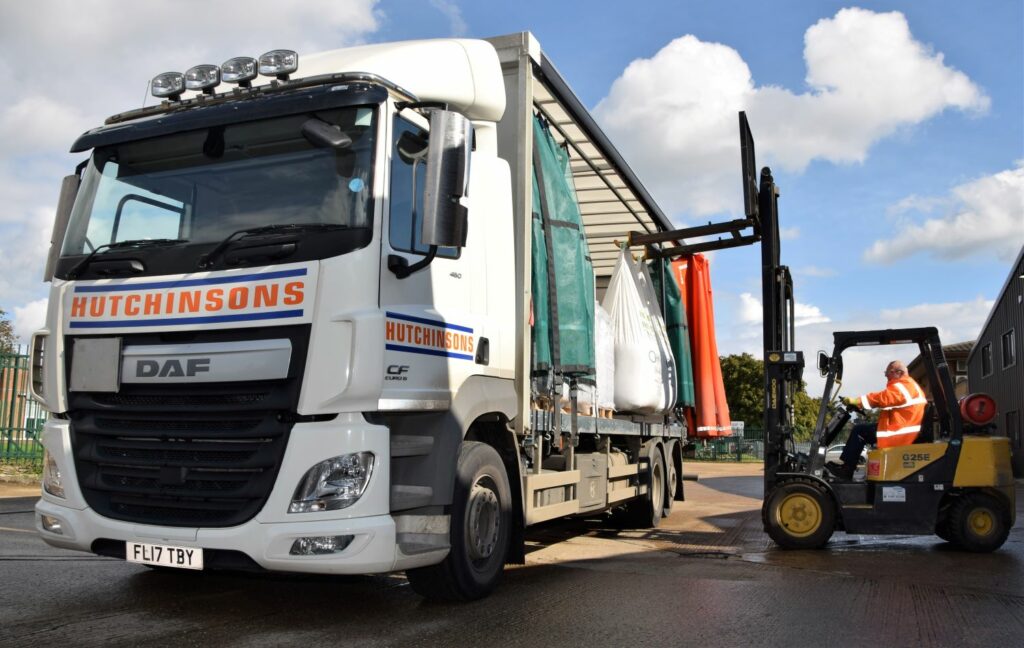Farmers reminded about safe urea storage as demands rise
19th October 2022
Following a surge in demand for urea fertiliser products, the agronomy firm Hutchinsons issued a reminder to farmers about the safe handling and storage of urea.
The transportation and storage of all fertilisers is strictly regulated, and farmers should take steps to abide by these rules, says Hutchinsons fertiliser and crop nutrition specialist Rob Jewers. In particular, he warns careful attention must be paid when storing urea and ammonium nitrate (AN) products together.
Since there are regulations prohibiting urea and AN being transported or stored in the same space, farmers could risk failing ACCS or Red Tractor inspections by not following the appropriate guidelines. There is also an increased risk of loss to property should there be an incident, Mr Jewers cautioned.
“Urea has been more competitively priced than ammonium nitrate this year, by quite some margin,” he added. “One kilo of AN nitrogen was priced at around £2.60 at the end of September, whereas a kilo of urea nitrogen worked out to be about £1.90, so we have seen more demand for it.
“There may well be farmers who haven’t bought urea before, or haven’t used it for a long time, that perhaps aren’t aware the two [AN and urea] shouldn’t be stored together. It is something to think about, otherwise you might be in for a shock if there’s an ACCS inspection.”
Mr Jewers explained that the reason urea and AN cannot be stored or transported together is less to do with the products reacting with each other, and more with the fact that urea is an organic material that acts as a carbon source. Therefore, if the AN was to set on fire, the urea would become an additional fuel source.
Ideally, farmers shouldn’t be storing the two products in the same building, Mr Jewers said. However, if this is unavoidable, guidelines suggest leaving a minimum 5m gap between urea and AN fertiliser bags.
Growers should also be aware of the general principles of safe fertiliser storage, which include:
- Store fertiliser in a cool, dry, well-ventilated place, out of direct sunlight
- Preferably store out of public view in a secure (lockable) shed
- Ensure correct signage is in place on buildings
- Do not store fertiliser alongside other potential fuel sources (e.g. hay, straw, diesel, wooden pallets, etc.)
- Ensure the surface is level and free from any objects that could puncture bags
- Do not store bags more than three high
- Leave at least 1-2m between fertiliser bags and any parked machinery
- Avoid using potential sources of ignition near fertiliser (e.g. naked flames, smoking, welding/ grinders)
- Follow the National Counter Terrorism Security Office (NaCTSO) Fertiliser Security Five Point Plan (see below).
According to Mr Jewers, urea fertiliser is slightly more prone to absorbing moisture from the air than AN. However, this can be prevented by storing bags correctly and taking care not to damage bags when moving or storing them.
He also advised farmers who haven’t used urea fertiliser before to account for it being bulkier than other products when assessing storage space requirements.
The NaCTSO’s five point plan for storing fertilisers securely is as follows:
- Wherever possible use a Fertiliser Industry Assurance Scheme (FIAS) approved supplier
- Wherever possible keep in a secure area, such as a building, or out of public view
- Carry out regular stock checks and report any loss to the police immediately (call 101)
- Avoid leaving fertiliser in a field overnight or for a long period of time
- Remember it is illegal to sell ammonium nitrate without the correct documentation.
The Fertiliser Security Five Point Plan is supported by the Agricultural Industries Confederation (AIC – FIAS), NFU and NFU Scotland, Assured Food Standards (Red Tractor), DEFRA and the HSE.

